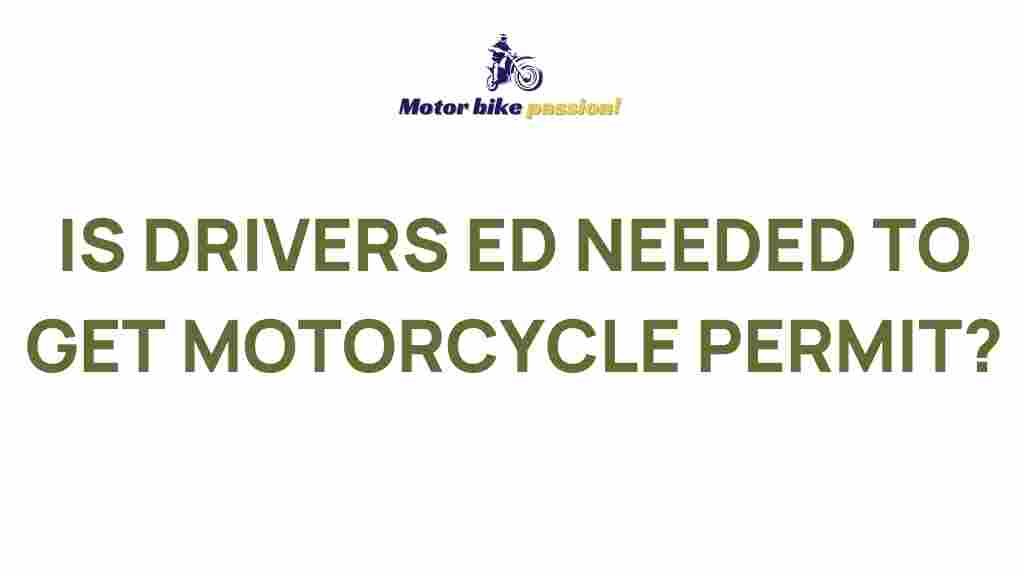Understanding the Importance of a Motorcycle Permit
Riding a motorcycle offers unparalleled freedom and adventure. However, safety and legality are crucial when hitting the road. This is where the motorcycle permit comes into play. It ensures that riders possess the fundamental knowledge and skills to operate their bikes safely. Whether you’re a new rider or brushing up on regulations, understanding motorcycle permit requirements is vital.
In this article, we delve into the significance of obtaining a motorcycle permit, walk you through the process of acquiring one, and provide troubleshooting tips to avoid common hurdles. By following these steps, you’ll be well-prepared to enjoy your motorcycle journeys while adhering to legal standards.
Why is a Motorcycle Permit Necessary?
Obtaining a motorcycle permit is more than just a formality. It serves several key purposes:
- Legal compliance: Most states and countries require a permit or license to ride a motorcycle. Riding without one can result in fines or other penalties.
- Safety assurance: The process involves learning essential road rules and safety practices, reducing the risk of accidents.
- Skill validation: Permits often require a skills test, ensuring riders have basic operational proficiency before venturing onto public roads.
For more details about local motorcycle permit regulations, check out this comprehensive guide.
Steps to Obtain Your Motorcycle Permit
Step 1: Check Eligibility Requirements
Before applying for a motorcycle permit, review the age and documentation requirements in your state or country. Typically, applicants must:
- Be at least 16 years old (age may vary by location).
- Provide proof of identity and residence, such as a government-issued ID or utility bill.
- Possess a valid driver’s license in some regions.
Step 2: Study for the Written Test
Most motorcycle permit processes include a written test to evaluate your knowledge of road rules and motorcycle-specific safety guidelines. Resources to prepare include:
- Motorcycle Operator Manuals: These guides, often provided by your local DMV, cover everything you need to know.
- Online Practice Tests: Use free practice exams to familiarize yourself with the test format and questions.
- Interactive Courses: Some regions offer online or in-person classes to help you prepare comprehensively.
Step 3: Pass the Written Test
After thorough preparation, schedule and take the written test at your local Department of Motor Vehicles (DMV) or equivalent authority. Upon passing, you’ll be issued a motorcycle permit, allowing you to practice riding under specific conditions.
Step 4: Practice Safe Riding
Use your permit period to gain confidence and experience. Adhere to any restrictions, such as:
- No riding after dark.
- Prohibition from carrying passengers.
- Riding only in specific areas or under supervision.
Step 5: Schedule and Pass the Skills Test
When you’re ready, schedule a skills test to demonstrate your ability to handle a motorcycle safely. This test usually involves:
- Basic maneuvers like starting, stopping, and turning.
- Emergency procedures, such as sudden braking.
- Mastering traffic patterns and signals.
Upon passing, you’ll receive your full motorcycle license, unlocking the freedom to ride unrestricted.
Common Challenges and Troubleshooting Tips
Challenge: Failing the Written Test
If you don’t pass the written test, don’t worry. Most regions allow multiple attempts. Enhance your chances by:
- Reviewing incorrect answers to identify knowledge gaps.
- Using additional resources, such as instructional videos or community forums.
Challenge: Nervousness During the Skills Test
Test-day anxiety is normal. Combat this by:
- Practicing frequently in various conditions, such as different weather or road types.
- Focusing on breathing techniques to stay calm and collected.
- Arriving early to familiarize yourself with the testing area.
Challenge: Understanding State-Specific Rules
Regulations can vary significantly between regions. Avoid confusion by:
- Consulting your local DMV website for official guidelines.
- Connecting with local motorcycle communities for practical advice.
Explore our guide to motorcycle licensing by state for more localized information.
Conclusion: Empower Your Riding Journey
A motorcycle permit is a cornerstone of responsible and enjoyable riding. By understanding its importance and following the outlined steps, you’ll not only meet legal requirements but also enhance your safety and skills.
Remember, the road to becoming a licensed motorcyclist is a journey in itself. From studying for the written test to mastering skills on the road, each step prepares you for the open roads ahead. For additional resources, consider visiting the Motorcycle Safety Foundation.
Begin your journey today, and embrace the adventure that awaits with confidence and preparation.
This article is in the category Safe Driving and created by MotorBikePassion Team
